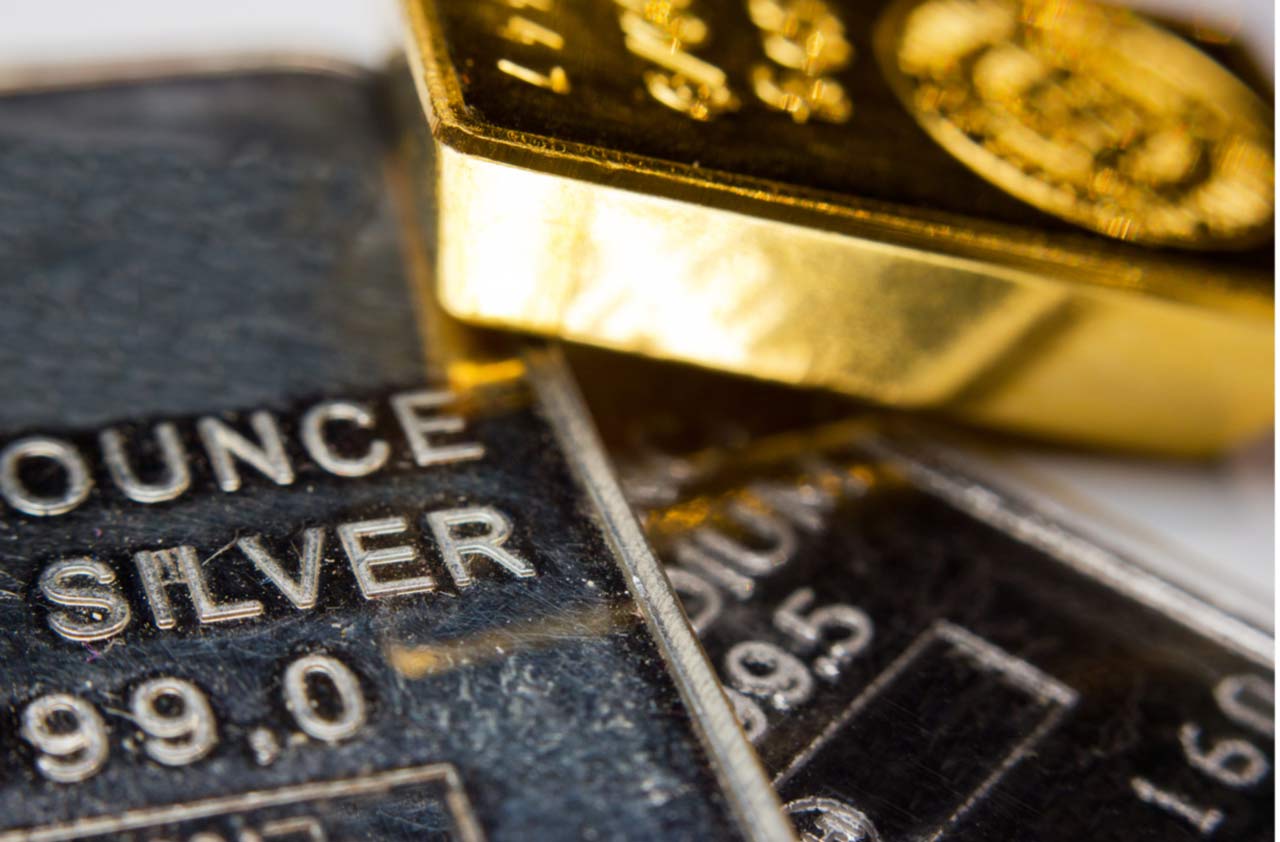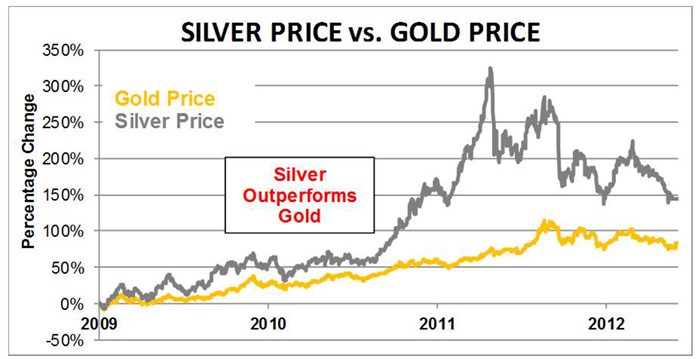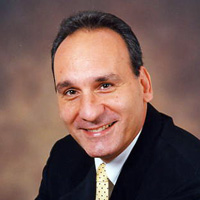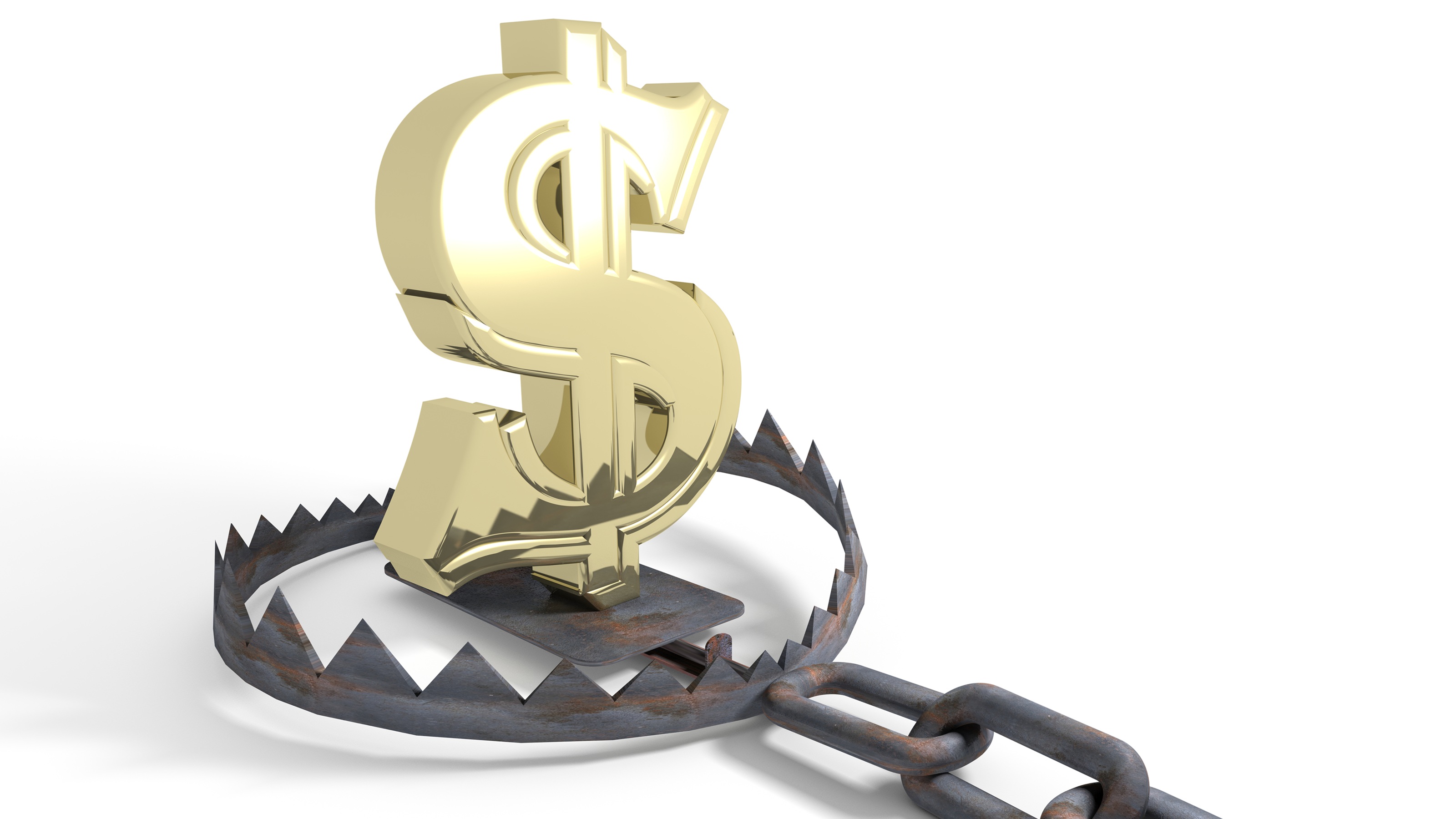Why Silver and Gold Look Shiny to Investors Right Now
While they have their downsides, precious metals offer a hedge in times of trouble and inflation. Now could be a good time to take a look.

With so much going on in the world these days, it’s easy to overlook the developments in the precious metal markets. Even as governments continue to devalue currencies, central banks across the globe have been accumulating gold. I think investors should start considering a small allocation in precious metals as well.
I realize that probably doesn’t sit well with many other advisers, who regard gold and silver as nothing more than shiny metal that sits in a vault, collecting dust and earning no interest or dividends.
But investors, in general, need to protect themselves from these currency devaluations, which will likely lead to inflation in the future. Even if we are currently in a deflationary environment, central banks continue to pursue inflation. I think they will, at some point be successful in achieving this goal. As such, a small allocation to precious metals could protect the purchasing power of your savings and insure your overall wealth.
From just $107.88 $24.99 for Kiplinger Personal Finance
Be a smarter, better informed investor.

Sign up for Kiplinger’s Free Newsletters
Profit and prosper with the best of expert advice on investing, taxes, retirement, personal finance and more - straight to your e-mail.
Profit and prosper with the best of expert advice - straight to your e-mail.
How much you should invest in precious metals, of course, depends on your portfolio and other factors. A good baseline for any investor interested in maintaining a small allocation in precious metals would be to keep a 10-to-1 ratio in mind. For these investors, every $10 you have in bonds or annuities should be matched by $1 invested in precious metals.
In the current global economic environment, precious metals look like a good short term-investment. Simply put, precious metals may be a good hedge for investors facing the myriad problems associated with the present economic environment, especially currency devaluation.
A diversified portfolio of tangible assets such as gold or silver should equal about 5% (and sometimes more) of an investor’s portfolio. That's a prudent asset-diversification strategy at any time. And in today's uncertain political and economic environment, there are many (and very sound) reasons to consider investing in precious metals to diversify your holdings.
Keep in mind, precious metals are not like other asset allocations. For example, putting money in precious metals is very different than investing in the stock market. Even the word “investment" seems a bit out of place here. Gold doesn’t pay dividends; gold doesn’t pay interest. It’s a metal that has historically been used as money. Throughout the world, gold continues to be recognized as money. As such, it offers long-term protection as our currency is devalued for investors looking to be able to maintain their lifestyles 10 to 15 years down the road.
I think silver is an even better option than gold for investors looking to diversify. Right now, the silver-to-gold price ratio is fairly high. Historically, that ratio has been 16-to-1; meaning 16 ounces of silver are valued the same as 1 ounce of gold. Right now, the ratio is far higher: 65 to 70 ounces of silver have the same dollar value as every ounce of gold. If history repeats itself, we should see that 16-to-1 ratio of silver to gold return in the near future. As such, I see far more upside with silver than I do with gold.
Allocating a portion of your assets in silver, at current prices, could offer investors and retirees one of the single best long-term investments available today. Along with gold, it is recognized as a store of value. What is not so well known is that, while gold has demonstrated a solid trend of price appreciation since 2001, more than quintupling in price, the price of silver has in the past outperformed gold.

Precious metals have been a safe haven in times of war, political strife and uncertainty. With the potential for rising inflation and the continued devaluation of paper currency as likely possibilities, I think it’s a good time to consider precious metals for your retirement portfolio.
The safest way to do that may be to own the metal outright. You can also consider gold and silver mining company’s such as Goldcorp (GG), Barrick Gold (ABX) and Newmont Mining (NEM) to name a few. For silver, consider First Majestic (AG), Silver Wheaton Corp. (SLW) and Pan American Silver Corp. (PAAS).
Kevin Derby contributed to this article.
Investment Advisory Services offered through Brookstone Capital Management LLC an SEC Registered Investment Adviser.
Profit and prosper with the best of Kiplinger's advice on investing, taxes, retirement, personal finance and much more. Delivered daily. Enter your email in the box and click Sign Me Up.

Dr. Richard Pucciarelli is the president and founder of Carolina Retirement Resources Inc. He has over 15 years experience serving retirees and pre-retirees in planning for and protecting their financial futures. Pucciarelli is an Investment Adviser Representative and a licensed insurance professional. He hosts the "Financial Symphony" show on WBT Radio 1110 AM every Saturday morning at 11 a.m.
-
 Trade Uncertainty Sparks Whipsaw Session: Stock Market Today
Trade Uncertainty Sparks Whipsaw Session: Stock Market TodayVolatility is making a cameo here in mid-October, a generally positive month marked by its historic stock market events.
-
 How to Add Your Passport to Google Wallet
How to Add Your Passport to Google WalletTravelers can now store and use their digital passport on Android for faster, more secure airport experiences.
-
 Medicare Open Enrollment: Why You Need to Pay Extra Attention to Part D, From a Financial Adviser
Medicare Open Enrollment: Why You Need to Pay Extra Attention to Part D, From a Financial AdviserThe lowest premium for prescription drug coverage might not actually save you the most money. Make sure you take copays into consideration and do the math.
-
 How the One Big Beautiful Bill Will Change Charitable Giving
How the One Big Beautiful Bill Will Change Charitable GivingTaxpayers who don't itemize will be able to take a bigger deduction for donations, which could boost giving. However, high-income donors could see their tax benefits reduced.
-
 A 'Fast, Fair and Friendly' Fail: Farmers Irks Customers With Its Handling of a Data Breach
A 'Fast, Fair and Friendly' Fail: Farmers Irks Customers With Its Handling of a Data BreachFarmers Insurance is facing negative attention and lawsuits because of a three-month delay in notifying 1.1 million policyholders about a data breach. Here's what you can do if you're affected.
-
 Serving the HNW Market: How Financial Advisers Can Break Through and Deliver Lasting Value
Serving the HNW Market: How Financial Advisers Can Break Through and Deliver Lasting ValueFinancial advisers have a significant opportunity to serve high-net-worth clients by elevating their capabilities, delivering comprehensive planning, building diverse teams and prioritizing family wealth education.
-
 Don't Just Sell, Connect: How Financial Advisers Can Ignite Their Sales Growth
Don't Just Sell, Connect: How Financial Advisers Can Ignite Their Sales GrowthAvoid complacency and embrace small, consistent improvements to optimize your sales process and results.
-
 Are You a Small Business Owner Buckling Under Economic Pressure? Here's How You Can Cope
Are You a Small Business Owner Buckling Under Economic Pressure? Here's How You Can CopeSignificant emotional and financial challenges, including tariff worries, are piling up on small business leaders. Here's how leaders can develop more healthy coping strategies and systems of support.
-
 To Raise Prices or Not to Raise Prices: Tariff Tips for Small Businesses
To Raise Prices or Not to Raise Prices: Tariff Tips for Small BusinessesSmall businesses are making critical decisions. Should they pass on higher costs due to tariffs, or would that only cost them more in lost customers?
-
 Five Retirement Planning Traps You Can't Afford to Fall Into, From a Wealth Adviser
Five Retirement Planning Traps You Can't Afford to Fall Into, From a Wealth AdviserTo help ensure you reach your savings goals and enjoy financial security in your golden years, be aware of these common pitfalls. The key is to be proactive, informed and flexible.
